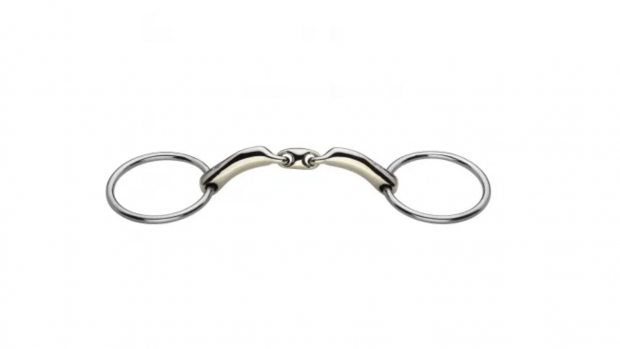Understanding how different bits, including the jointed snaffle, fit and work inside a horse’s mouth is vital to finding the right bit.
Dr Hilary Clayton, an equine locomotion specialist at Michigan State University, has studied the action of the bit in the horse’s mouth using fluoroscopy – an X-ray technique which shows the position and movement of the bit in the mouth.
“The tongue is soft which allows it to accommodate the bit,” says Hilary. “It is extremely mobile allowing the horse to move the bit to become more comfortable. The hard palate in the roof of the mouth is immobile and vulnerable to pressure from the bit.”
The jointed snaffle has two arms, which can be smooth, curved, square, twisted or rollered, meeting at the centre joint. It lies between the tongue and hard palate, with a slight angulation toward the incisor teeth.
Tension on the reins causes the mouthpiece to indent the tongue more deeply, pulling it away from the hard palate and leaving an air filled pocket above the joint of the bit. It is believed that some horse open their mouth or snatch at the reins to reduce the pressure on their tongue.
Size is important
Whatever bit you choose, it must be the correct size for the horse if it’s action is going to remain true.
“Fluoroscopic videos of horses wearing snaffle bits of various sizes have shown the majority of horses appear most comfortable with a jointed snaffle that is only slightly longer from ring to ring than the mouth,” says Hilary.
“A bit that’s too short pulls in the horse’s cheeks, squeezing the loose tissue onthe inside of the cheek against the premolar teeth, where they are vulnerable to abrasions.
“In my experience, a bit that’s too short is less of a problem than one that’s too long. When the bit is too long, the joint hangs lower on the tongue which may irritate the horse. A longer mouth piece also makes it easier for the horse to crunch the bit between its teeth.”



